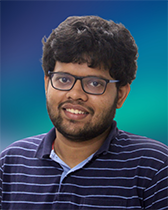Anurup Mohanty
PhD Student
Curriculum Vitae

- AnurupMohanty2028@u.northwestern.edu
- 847-491-8182
- Tech F482
There exist microbes, called extremophiles, that thrive in boiling water, freezing temperatures, some of the deepest parts of the ocean, and miles below our feet where there is almost nothing to "eat”. How do extremophiles manage to survive in extremes? How do they interact with these environments? Can we expect similar microbes on other worlds in our solar system? These are some questions that keep me awake. I hope to explore these questions through a geobiology lens and make meaningful contributions while at the Osburn Lab.
I can often be found discussing science with random strangers or sharing fun facts with you. I enjoy traveling, writing popular science articles, giving talks to the public, and sharing interesting information through social media.
Social Media
Linktree: https://linktr.ee/strayologist
Awards
AbSciCon 2022 – Creative Writing Competition – 3rd Prize (w/ Rohan Chowdhury) in Science Fiction
Axiom Space – STARS Scholarship 2021 – Winner (w/ Team "The Extreme Biominers")
Outreach/service
Teaching Assistant: Introduction to Astrobiology (Online Course), Amity Centre of Excellence in Astrobiology.
Field Teaching Assistant: Earth and Space Exploration Program 2021 – Ladakh, India
Selected Publications
Mohanty, A., Shaw, B., Pradeep, N., Singh, N. K., & Venkateswaran, K. (2023). Exploring the Potential of Bacteriophages on Earth and Beyond. Journal of the Indian Institute of Science. DOI: 10.1007/s41745-023-00361-0
Santomartino, R., Averesch, N. J. H., Bhuiyan, M., Cockell, C. S., Colangelo, J., Gumulya, Y., Lehner, B., Lopez-Ayala, I., McMahon, S., Mohanty, A., ... & Zea, L. et al. (2023). Toward sustainable space exploration: a roadmap for harnessing the power of microorganisms. Nature Communications, 14(1). DOI: 10.1038/s41467-023-37070-2
Pandey, S., Macey, M. C., Das, D., Mohanty, A., Tiwari, S., Jose, J. V., & Sharma, S. (2022). Astrobiology as a Driver to Connect India’s Public, Scientists, and Space Missions. New Space, 10(1). DOI:10.1089/space.2021.0041
